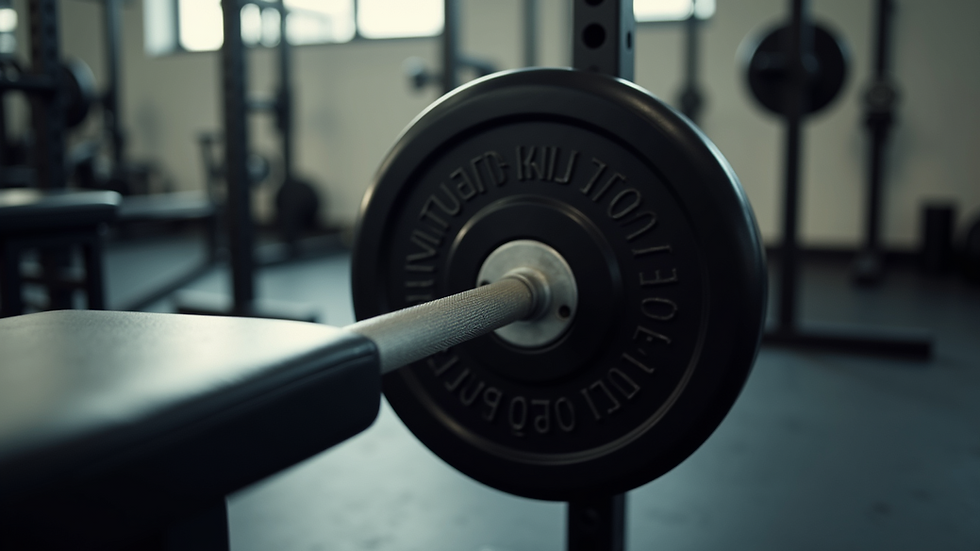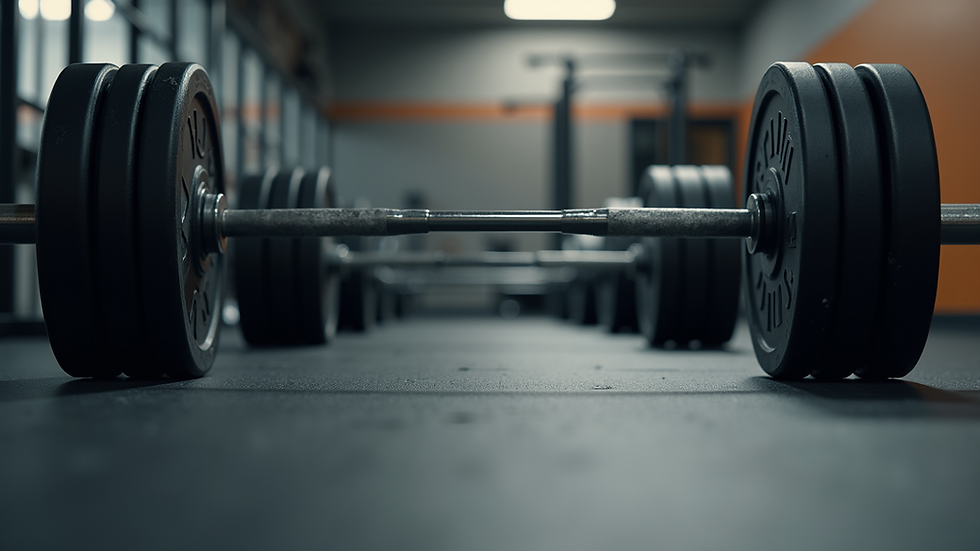CLUSTER SETS WEIGHTLIFTING METHOD
- Moran Sciamama-Saghiv
- Aug 30
- 5 min read
The world of weightlifting is vast and filled with various training methodologies, each designed to enhance performance, strength, and endurance. One such method that has gained traction among athletes and coaches alike is the Cluster Sets Weightlifting Method. This innovative approach to training allows for increased intensity and volume while minimizing fatigue, making it a valuable tool for anyone looking to improve their lifting capabilities. In this blog post, you will learn about the principles behind cluster sets, how to implement them in your training, and the benefits they offer.
What Are Cluster Sets?
Cluster sets are a unique training technique that involves breaking down a traditional set into smaller, manageable segments or "clusters." Instead of performing a continuous set of repetitions, you will perform a few repetitions followed by a short rest period, then continue with more repetitions. This method allows you to lift heavier weights while maintaining proper form and reducing the risk of injury.
The primary goal of cluster sets is to maximize strength and power output. By incorporating short rest intervals, you can recover partially between repetitions, enabling you to lift more weight than you would in a traditional set. This technique is particularly beneficial for athletes looking to improve their explosive strength and overall performance.
How to Implement Cluster Sets in Your Training
Implementing cluster sets into your training routine is straightforward, but it requires careful planning and execution. Here’s a step-by-step guide to help you get started:
Step 1: Choose Your Exercise
Begin by selecting the exercise you want to perform using the cluster set method. Compound movements such as squats, deadlifts, and bench presses are excellent choices, as they engage multiple muscle groups and allow for heavier loads.
Step 2: Determine Your Load
Next, decide on the weight you will use for your cluster sets. A good starting point is to use 80-90% of your one-repetition maximum (1RM). This weight should be challenging but manageable, allowing you to maintain proper form throughout the clusters.
Step 3: Set Your Repetition Scheme
A common cluster set scheme involves performing 2-5 repetitions per cluster, followed by a rest period of 10-30 seconds. For example, you might perform 3 repetitions, rest for 20 seconds, then perform another 3 repetitions. Repeat this process for a total of 3-5 clusters.
Step 4: Monitor Your Rest Periods
Rest periods are crucial in cluster sets. The short breaks between clusters allow for partial recovery, enabling you to maintain a high level of performance. Be mindful of your rest times, as they can significantly impact the effectiveness of your training.
Step 5: Track Your Progress
As with any training method, tracking your progress is essential. Keep a training log to record the weights used, the number of clusters completed, and any notes on your performance. This information will help you adjust your training as needed and ensure continuous improvement.
Benefits of Cluster Sets
The Cluster Sets Weightlifting Method offers several advantages that can enhance your training experience and results. Here are some key benefits to consider:
1. Increased Strength and Power
One of the primary benefits of cluster sets is the potential for increased strength and power output. By allowing for short rest periods, you can lift heavier weights and perform more repetitions, leading to greater muscle recruitment and adaptation.
2. Improved Technique
Cluster sets provide an opportunity to focus on your lifting technique. The short rest intervals allow you to recover enough to maintain proper form, reducing the risk of injury and promoting better movement patterns.
3. Enhanced Muscle Hypertrophy
The increased volume and intensity associated with cluster sets can lead to greater muscle hypertrophy. By pushing your muscles to their limits, you stimulate growth and adaptation, resulting in increased muscle size and strength.
4. Greater Training Variety
Incorporating cluster sets into your training routine adds variety and keeps your workouts fresh. This variation can help prevent plateaus and keep you motivated to continue pushing your limits.
5. Flexibility in Training
Cluster sets can be adapted to various training goals, whether you’re focusing on strength, power, or hypertrophy. This flexibility makes them a valuable tool for athletes of all levels and disciplines.
Common Mistakes to Avoid
While cluster sets can be highly effective, there are some common mistakes that you should avoid to ensure optimal results:
1. Using Too Heavy a Load
One of the most significant mistakes is attempting to lift too heavy a weight. While the goal is to challenge yourself, using a weight that is too heavy can lead to poor form and increased risk of injury. Start with a manageable load and gradually increase as you become more comfortable with the technique.
2. Inadequate Rest Periods
Another common mistake is not allowing enough rest between clusters. Short rest periods are essential for maintaining performance, so be sure to adhere to your planned rest times to maximize the benefits of cluster sets.
3. Neglecting Warm-Up
Before diving into cluster sets, it’s crucial to perform a proper warm-up. This preparation helps to increase blood flow to your muscles, improve flexibility, and reduce the risk of injury. Incorporate dynamic stretches and lighter sets to prepare your body for the heavier loads.
4. Ignoring Recovery
Recovery is a vital component of any training program, and cluster sets are no exception. Be sure to allow adequate recovery time between training sessions to promote muscle repair and growth. This may include rest days, proper nutrition, and hydration.
5. Failing to Track Progress
As mentioned earlier, tracking your progress is essential for success. Failing to monitor your performance can lead to stagnation and missed opportunities for improvement. Keep a detailed log of your workouts to stay accountable and motivated.
Sample Cluster Set Workout
To help you get started with cluster sets, here’s a sample workout that you can incorporate into your training routine:
Exercise: Barbell Squats
Warm-Up: 5-10 minutes of dynamic stretching and light cardio
Load: 80% of your 1RM
Repetitions: 3 repetitions per cluster
Clusters: 4 clusters
Rest Between Clusters: 20 seconds
Rest Between Sets: 2-3 minutes
Exercise: Bench Press
Warm-Up: 5-10 minutes of dynamic stretching and light cardio
Load: 80% of your 1RM
Repetitions: 2 repetitions per cluster
Clusters: 5 clusters
Rest Between Clusters: 15 seconds
Rest Between Sets: 2-3 minutes
Exercise: Deadlifts
Warm-Up: 5-10 minutes of dynamic stretching and light cardio
Load: 85% of your 1RM
Repetitions: 3 repetitions per cluster
Clusters: 3 clusters
Rest Between Clusters: 30 seconds
Rest Between Sets: 2-3 minutes
Conclusion
The Cluster Sets Weightlifting Method is a powerful training technique that can help you achieve your strength and performance goals. By breaking down traditional sets into smaller clusters, you can lift heavier weights, improve your technique, and enhance muscle hypertrophy.
As you incorporate cluster sets into your training routine, remember to monitor your progress, allow for adequate recovery, and avoid common mistakes. With dedication and consistency, you will likely see significant improvements in your lifting capabilities.
Whether you are a seasoned athlete or just starting your weightlifting journey, cluster sets can provide the variety and intensity needed to take your training to the next level. Embrace this method, and watch as you unlock new levels of strength and power.



Services by Dr. Moran Sciamama-Saghiv:





Comments